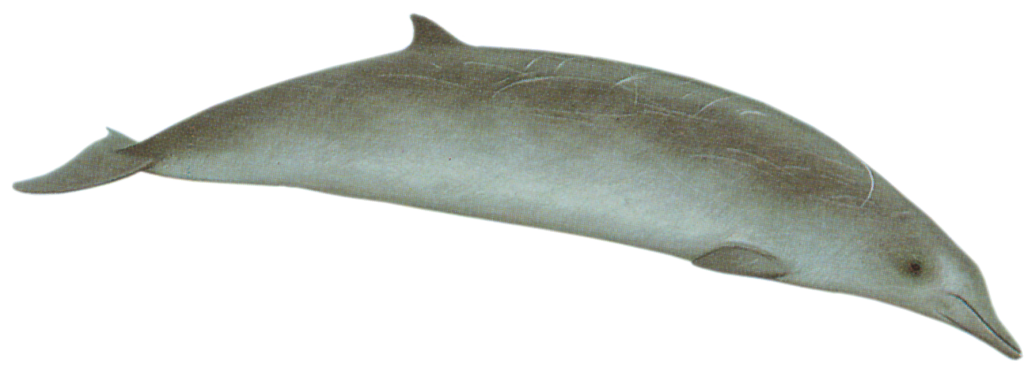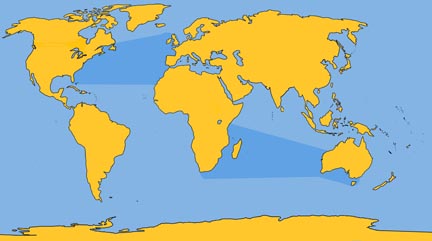 Famiy: Ziphiidae
Famiy: Ziphiidae
Genus: Mesoplodon
Species: M. mirus True, 1913
True’s beaked whale is another very rare and little-known animal. From limited confirmed sightings, they closely resemble Cuvier’s beaked whales.
Physical Description: The mid body is stocky but tapers sharply tot the flukes. The very well developed beak projects from a slightly bulbous forehead. Typical wishbone indentations are present on the throat.
Color: From gray to brown coloration dorsally, to a lighter shade ventrally. Southern hemisphere animals have more white on their back, peduncle and flukes. The body may be covered with pink, yellow or purple spots or scratches — probably tooth marks from others of its species.
Fins and Flukes: The small falcate dorsal fin is located on the extreme rear of the mid-back region, followed by pronounced ridges to the flukes. The very small flippers are located well up on the sides. The well-spread flukes are concave and rounded at their tips, with slight or no median notch.
Length and Weight: These animals reach a length of 15.5 to 17. 5 ft (4.8 to 5.4 m) and a weight of 2,200 to 3,000 lb (1,020 to 1,400 kg); females are slightly larger.
Teeth: One pair of teeth is located on the tip of the lower jaw. No teeth are found in the upper jaw. Teeth do not erupt through the gums of females.
Feeding: Small fish and cephalopods.
Breathing and Diving: Their low inconspicuous blow, and their shy nature make it difficult to observe them at sea.
Mating and Breeding: Calves are born at about 6.5 to 8 feet (2 to 2.5 m) and about 300 lb (136 kg).
Herding: When confirmed at sea they are usually in tight-knit groups of up to a half dozen animals.
Distribution: North Atlantic from Florida and Nova Scotia east to the British Isles; an apparently isolated population exists in temperate waters off South Africa, extending possibly into the southwestern Indian Ocean.
Migration: No information available.








